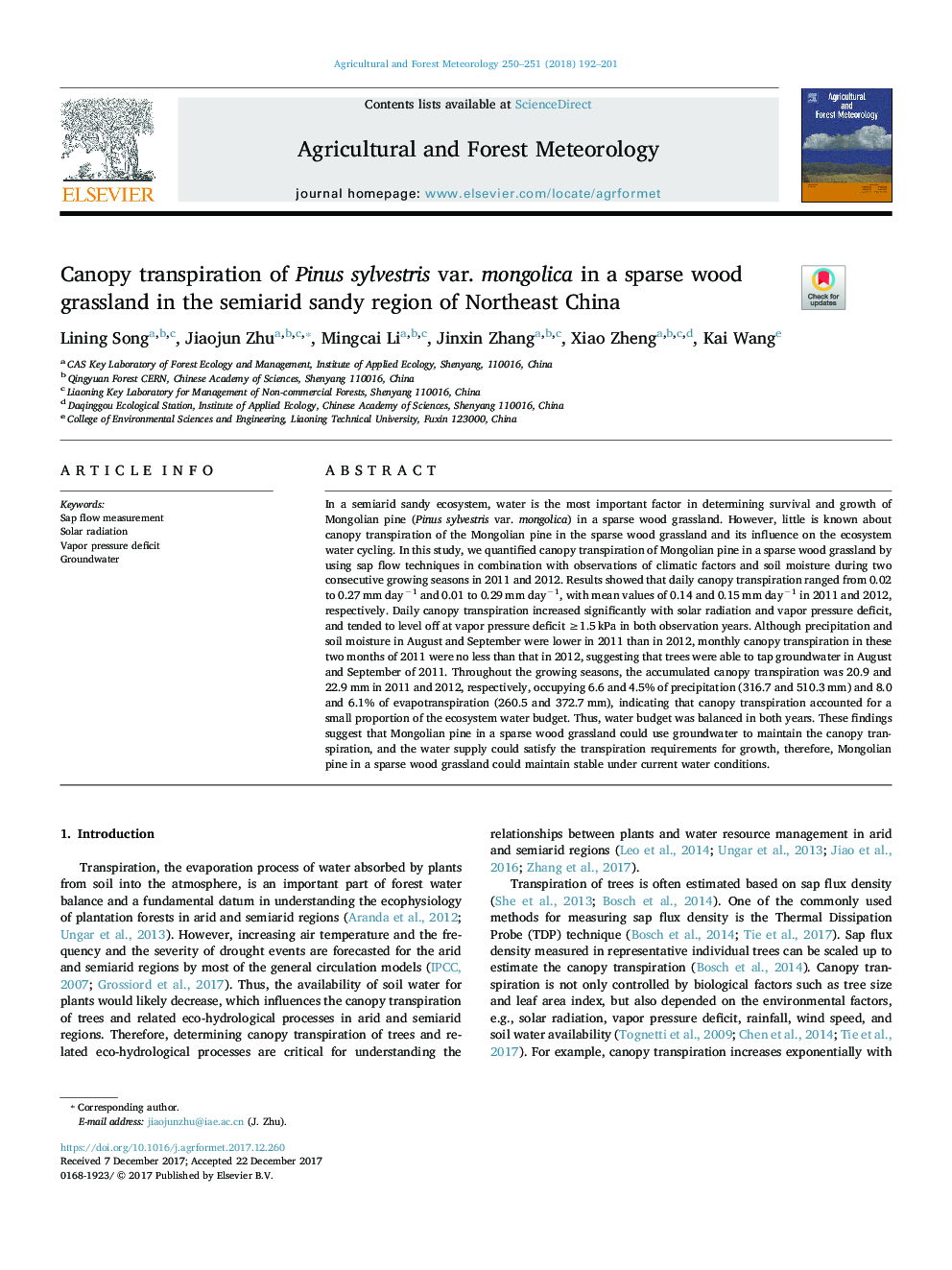| کد مقاله | کد نشریه | سال انتشار | مقاله انگلیسی | نسخه تمام متن |
|---|---|---|---|---|
| 6536806 | 1420851 | 2018 | 10 صفحه PDF | دانلود رایگان |
عنوان انگلیسی مقاله ISI
Canopy transpiration of Pinus sylvestris var. mongolica in a sparse wood grassland in the semiarid sandy region of Northeast China
دانلود مقاله + سفارش ترجمه
دانلود مقاله ISI انگلیسی
رایگان برای ایرانیان
کلمات کلیدی
موضوعات مرتبط
مهندسی و علوم پایه
علوم زمین و سیارات
علم هواشناسی
پیش نمایش صفحه اول مقاله

چکیده انگلیسی
In a semiarid sandy ecosystem, water is the most important factor in determining survival and growth of Mongolian pine (Pinus sylvestris var. mongolica) in a sparse wood grassland. However, little is known about canopy transpiration of the Mongolian pine in the sparse wood grassland and its influence on the ecosystem water cycling. In this study, we quantified canopy transpiration of Mongolian pine in a sparse wood grassland by using sap flow techniques in combination with observations of climatic factors and soil moisture during two consecutive growing seasons in 2011 and 2012. Results showed that daily canopy transpiration ranged from 0.02 to 0.27â¯mm dayâ1 and 0.01 to 0.29â¯mm dayâ1, with mean values of 0.14 and 0.15â¯mm dayâ1 in 2011 and 2012, respectively. Daily canopy transpiration increased significantly with solar radiation and vapor pressure deficit, and tended to level off at vapor pressure deficit â¥1.5â¯kPa in both observation years. Although precipitation and soil moisture in August and September were lower in 2011 than in 2012, monthly canopy transpiration in these two months of 2011 were no less than that in 2012, suggesting that trees were able to tap groundwater in August and September of 2011. Throughout the growing seasons, the accumulated canopy transpiration was 20.9 and 22.9â¯mm in 2011 and 2012, respectively, occupying 6.6 and 4.5% of precipitation (316.7 and 510.3â¯mm) and 8.0 and 6.1% of evapotranspiration (260.5 and 372.7â¯mm), indicating that canopy transpiration accounted for a small proportion of the ecosystem water budget. Thus, water budget was balanced in both years. These findings suggest that Mongolian pine in a sparse wood grassland could use groundwater to maintain the canopy transpiration, and the water supply could satisfy the transpiration requirements for growth, therefore, Mongolian pine in a sparse wood grassland could maintain stable under current water conditions.
ناشر
Database: Elsevier - ScienceDirect (ساینس دایرکت)
Journal: Agricultural and Forest Meteorology - Volumes 250â251, 15 March 2018, Pages 192-201
Journal: Agricultural and Forest Meteorology - Volumes 250â251, 15 March 2018, Pages 192-201
نویسندگان
Lining Song, Jiaojun Zhu, Mingcai Li, Jinxin Zhang, Xiao Zheng, Kai Wang,